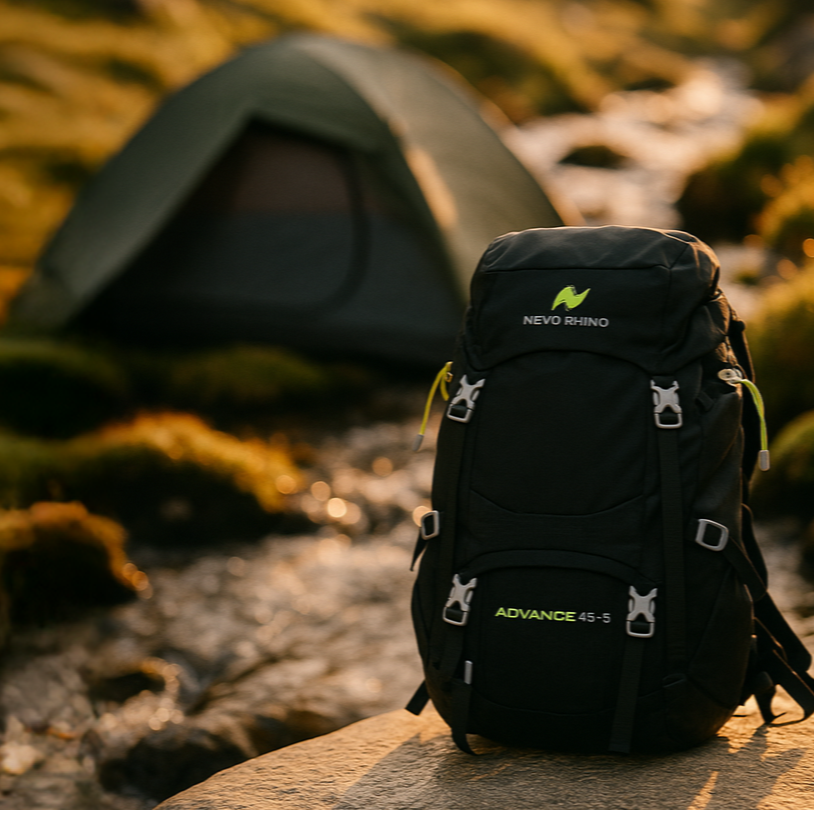
Can You Use a Regular Pan on a Campfire? (And What You Should Know Before You Try)
Share
You're out at the campsite, fire crackling, appetite roaring — and all you’ve got is a regular kitchen pan.
The question hits:
Can I actually use this over the fire?
The answer is: Yes. But with big caveats.
If you're not careful, you could ruin your pan, mess up your food, or even hurt yourself.
In this guide, you’ll learn whether regular pans can be used on a campfire, what types of cookware hold up best, and what to avoid if you want your gear (and your meal) to survive the flames.
Can You Use a Regular Pan Over a Campfire?
Technically yes, but... most household pans aren't designed for open fire cooking.
Here’s what to know:
- Regular pans with plastic parts (handles, coatings, rubber grips) will melt or burn
- Nonstick pans (like Teflon) can off-gas harmful chemicals at high heat
- Thin pans can warp or burn food unevenly
- Glass cookware (like Pyrex) can shatter from direct flame exposure
Bottom line: If you’re in a pinch, you can use a plain stainless steel or cast iron pan but never nonstick or anything with plastic.
What Type of Pans Work Best Over a Fire?
If you’re planning to cook regularly at campfires, invest in fire-ready cookware:
Best Campfire-Safe Pans:
- Cast Iron Skillet - Heats evenly, bombproof durability, great flavor
- Carbon Steel or Stainless Steel - Lightweight, safe for flame, cleans up easily
- Camping-Specific Aluminum Cookware - Lightweight and built for direct flame use
- Titanium - Expensive but ultralight and super heat-resistant (for backpackers)
Avoid: Anything with a nonstick coating, glass lids, or plastic handles unless it’s labeled heat-resistant for camp use.
Tips for Using a Pan Safely on a Campfire
- Use a grill grate or rocks to hold the pan above the flames
- Cook over hot coals, not active flames. Coals provide steadier, more controllable heat
- Bring oil or butter to prevent sticking (especially with stainless steel)
- Use long-handled utensils to avoid burns
- Let your pan cool before rinsing to avoid warping or cracking
Survival Tip: Campfire heat is intense and inconsistent. Keep an eye on your food, burning happens fast!
Cleaning Up After Campfire Cooking
- Let the pan cool naturally
- Scrub off residue with sand, water, or a metal scraper
- Avoid soap on cast iron, just rinse, dry, and oil it lightly
- Store your pan in a dry sack or plastic bag to keep your pack clean
Your cookware might look more “seasoned” after the trip, and that’s part of the story.
The 7th Step Cooking Philosophy
You don’t need fancy kitchen gear. You need tools that work with the wild, not against it.
That’s why our 7th Step Starter Kit includes a lightweight camp stove and cookware. No guessing, no melted handles, no ruined dinner.
Final Thought: Yes, But Choose Wisely
You can use a regular pan on a campfire, but it’s not always smart.
Use metal only, skip the coatings, and avoid anything that would melt in your oven. Better yet, bring cookware built for the wild so you can focus on the food, not fighting your gear.
→ Get the Starter Kit
Gear up with confidence and cook like someone who belongs out there.












